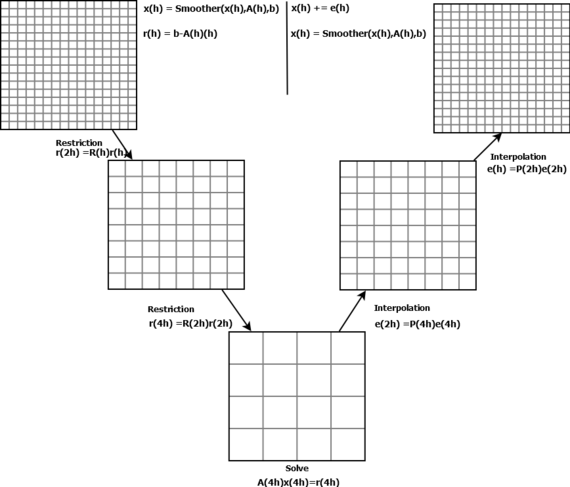 |
|
||||
BiographyFelipe was born in 1987 in Rio de Janeiro, Brazil. He received his Electronic and Computational Engineering degree from the Federal University of Rio de Janeiro in 2015. Subsequently, he studied Microelectronics at COPPE, where he wrote his Master's thesis at the Laboratório de Projeto de Circuitos, receiving his MSc. Degree in Electrical Engineering in 2018. After finishing his studies he joined the Institute for Microelectronics in January 2019, where he is currently working on his doctoral degree. Felipe is researching parallel numerical approaches for solving the Boltzmann Equation. |
|||||
Parallelization Strategies for Linear and Nonlinear Solvers for the Boltzmann Equation
The established drift-diffusion and hydrodynamic models are unreliable when applied to novel devices because the assumptions made in the derivation of these models begin to fail for scales well below the Debye length. Thus, instead of using these macroscopic models, which are ultimately derived from the Boltzmann Transport Equation (BTE), for semiconductor devices, the full BTE itself needs to be solved.
Solving the BTE poses some difficulties inherent to all equations of the same type. It needs to be solved in seven dimensions and thus requires sophisticated solution methods. With the Spherical Harmonic Expansions (SHE) method, the solution of the BTE is represented using spherical harmonics functions in a similar manner to Fourier series expansion. The transport equations and collision operator are discretized using a box integration method, generating a nonlinear discrete system to be solved using iterative methods, such as Gummel Iteration and the Newton-Raphson method, leading to a sequence of linear problems that can be solved with parallel solvers.
The SHE method can benefit from multigrid solvers as an approach for preconditioning and accelerating the solution of the linear problems. Several levels of hierarchical scales of the problem are used to determine the solution, thus accelerating the overall solution procedure. In Fig. 1, a schematic representation of a multigrid is shown, where the solution is computed as follows. An initial mesh is restricted to a hierarchy of coarser meshes. On the coarsest level, the linear problem is solved exactly and much faster than for the initial fine mesh. The coarser solution is propagated to the original problem passing by each scale, aggregating information in each step. This procedure is iterated until the required level of accuracy is obtained. Fig. 2 shows the speed-up of these methods.
The nonlinear problem can also be improved not only using multigrid techniques as a linear parallel preconditioner for the linearized problem, but also by using the information from different scales to refine the energy space and computing multiple solutions for different forcing terms to find the final solution, as used in Newton-Krylov methods.

Fig. 1: A schematic representation of the multigrid method.

Fig. 2: Speed-up of the parallel linear solver in comparison with the serial solver.


